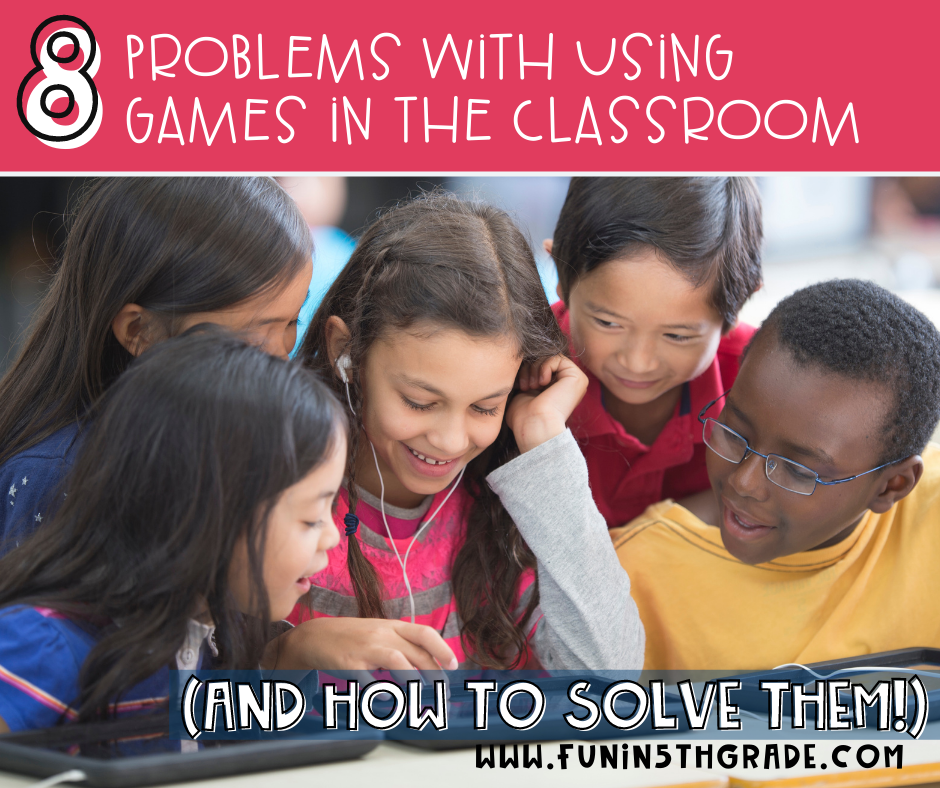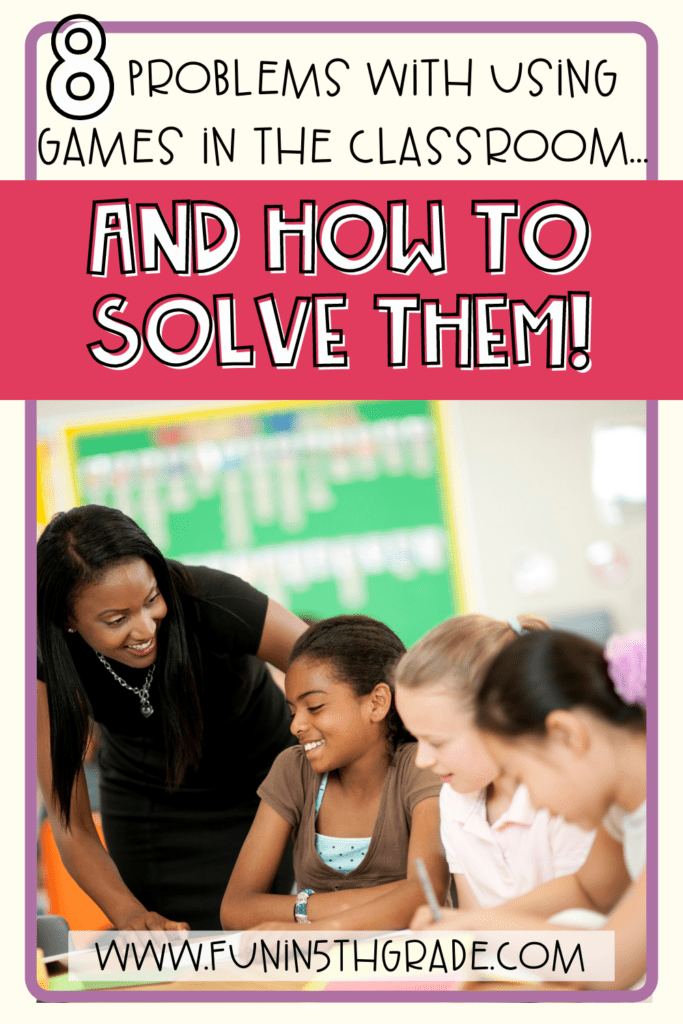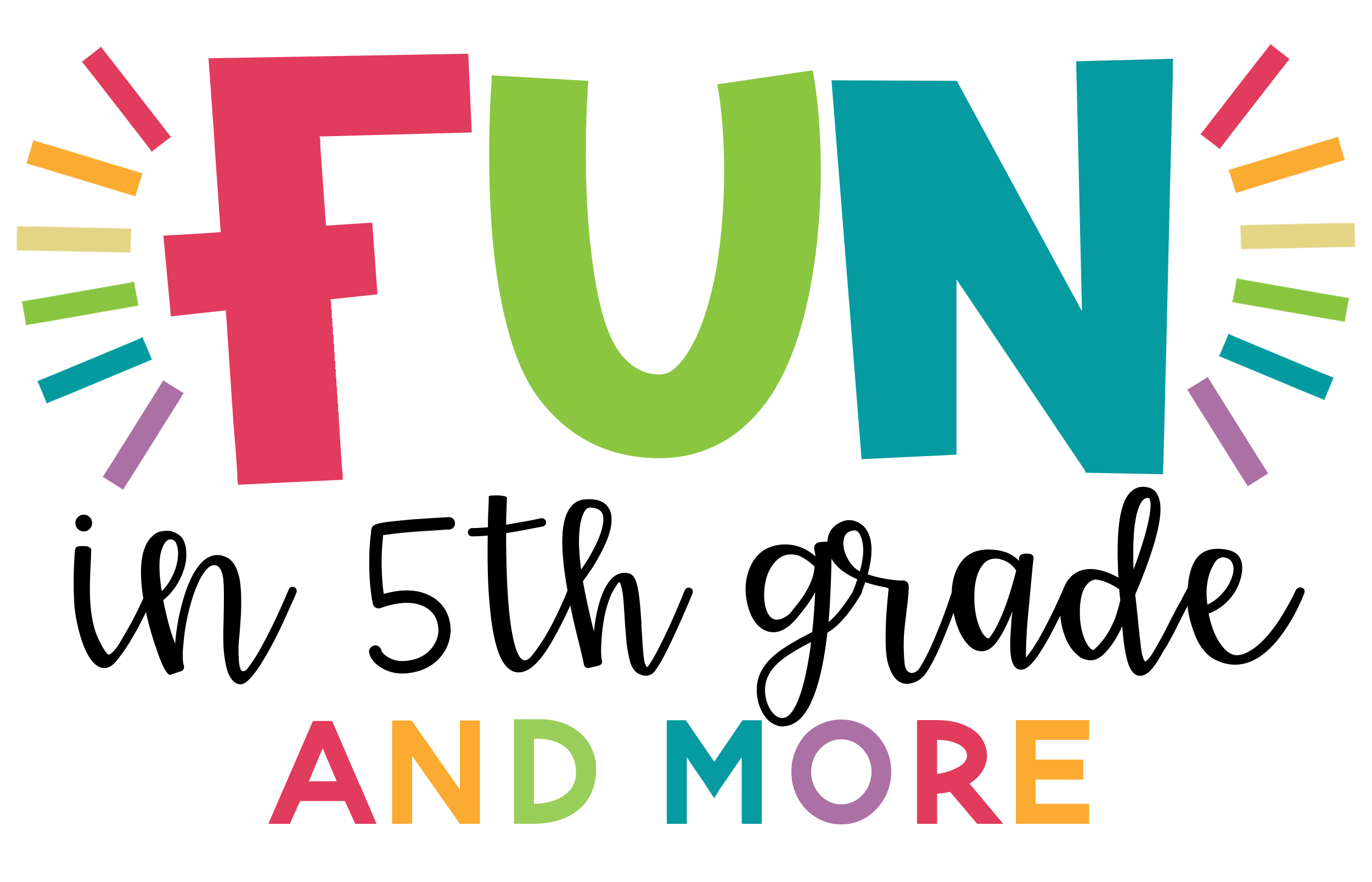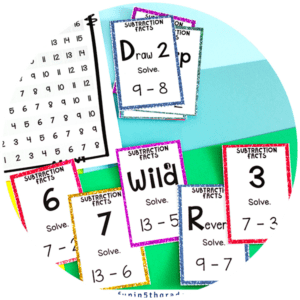Eliminate common problems with using games in the classroom and make playing games easier by trying some of these helpful tips and suggestions.
We love using games in the classroom, and here at Fun in 5th Grade, we have a whole array of different types of games specifically for this use, including Game Show Games, Digital Game Boards, U-KNOW, and many others, but playing games also includes a lot of moving pieces, and we aren’t just talking about game pieces.
Let’s be honest, when you introduce fun and games (literally) into the classroom, you are going to run into some classroom management and organization issues. Although using games in the classroom is a great way to work with students, review skills, practice soft skills, and generally have a little fun through friendly competition, games also tend to cause some problems.
A lot of organization and structure goes into implementing games into the classroom, especially if students are going to play games independently during small group or individual work time.
I have often been presented with questions and concerns from teachers regarding how to improve the game-playing experience in the classroom, so today we are going to dive into the 8 most common problems teachers experience when using games in the classroom and how to solve them (or at least be better prepared when they occur!).

8 Problems with using Games in the Classroom (and our solutions for each)
Problem #1 | Students aren’t staying on task!
Solution: Have a backup activity for students in case they are not playing the game. You’ll want your backup activity, handout, or worksheet to cover the same skill but most likely be less appealing than playing the game.
Make your expectations very clear from the beginning. Before playing the game, tell them what will happen if they don’t want to learn by playing a game. Specifically, they would still have practice with the skill without disrupting the rest who are playing correctly.
In my experience, I rarely had to actually do this as most students prefer to play the game and play it correctly.
Another option is to have students turn something in at the end of the game. This may be an accountability sheet or an answer sheet. Having to stay tuned in to the game will help to reduce unfocused behaviors.
Problem #2 | Students aren’t putting effort into learning during games!
Solution: If you are experiencing effort-related problems with using games in the classroom, then I would first start with adding an accountability component to the game until the students prove that they can make good choices during game time.
Part of encouraging students is also figuring out what makes them tick. If your students are competitive, then set up a challenge (even if for only that student). If your student likes to be in charge of the center of attention, give them the task of being the “game show host” for their group. You may need to be creative based on what your students are most encouraged by and how you can fit that into the gameplay.
Remember that sometimes a lack of interest is simply a student masking a concern about feeling inferior, stupid, or silly in front of peers. If a student is really pushing back on learning the game, maybe try the game in partners first to give the student a little additional support and build confidence.
Problem #3 | Students don’t play the games as intended!
Solution: Introduce all new games in small groups or all together as you practice playing for the first time. Don’t let them play until they prove they know how to play. I always introduce any new games that I’m going to cycle into centers or small groups first in a teacher group or during a whole group time.
Many of the games I used in my classroom (and those that we created for Fun in 5th Grade) have multiple variations on lots of different topics. Using the same game types throughout the year helps create cohesion and limit confusion about gameplay.
Problem #4 | I don’t have time to come up with / prep 3-4 centers per day/week for students to do while I’m meeting with small groups.
Solution: This is one of the most common problems with using games in the classroom, as we all know that a teacher’s time is incredibly valuable and limited. Prep as many games/activities as you can over the summer (your Back to School self will thank you)

Rotate through the games and only add in new ones as they learn how to play correctly. Use the same games the first few weeks of school as you will be teaching them how to play, and only once they get those down would you throw in (or introduce) more. My stations always consisted of review games that spiraled the content we’ve already learned. Learn more about how we spiral standards with games in this post.
Problem #6 | Students are interrupting/disrupting small groups while playing the games.
Solution: When dealing with interruptions regarding games during small group time, do not allow them to play games while you’re meeting with groups if you have not reviewed the procedures for how to play the games independently. Make sure students know prior to beginning that they are not to disrupt your teacher group unless there is an emergency. As we mentioned earlier, the games need to be introduced and reviewed with the teacher present, so take the time to do that during either small groups or as a whole group before allowing students to play the games on their own.
Now, noise volume…Let’s face it….games can get rowdy. Since we frequently suggest using games as part of centers or small group time, teachers often express that the noise level causes problems with playing games in the classroom while trying to do other things.
To be completely honest, noise is going to be a problem, so definitely make sure you review noise level expectations before implementing games during small groups or centers. A rule of thumb is that students should be using voices where the teacher cannot understand what they are saying. If it gets really bad, consider trying to play the games in total silence one day. Have students use whiteboards to communicate through writing and gestures only. They will find this a good, silly challenge, and you will find the room much quieter!
Problem #7 | Students do not take care of the materials.
Solution: Organize everything they need for any particular game into bins or baskets, so everything they need is ready and organized. After playing, students will clean up all materials and return them to the bins. When you are initially introducing and reviewing the game, make putting the game away correctly part of the lesson so students understand your expectations and know what taking care of the materials actually looks like.
Also, take the time to set clear expectations for what will happen if the games are not taken care of correctly. For example, if they can’t put the game away nicely, then instead of using a whiteboard to play the game, they would have to use paper, etc., until they prove that they can take care of the materials.
If you are prepping the games in the summer and have the time to take your organization one step further, make a list of the supplies needed to play the game and tape it to the basket or bin. Have one student, who is very organized, check in each basket and double-check that everything listed is in the bin. If there are shared materials that need to be checked in, they can also check those and put them away for the class.
One of the ways that I like to deal with organizational problems of using games in the classroom is to enlist the help of some of my students.
In the upper elementary grades, you are definitely going to have those students who find great joy in organizing and making things look nice. Let them help you with these types of tasks. It will bring them joy, and it will take some stress off of you!
Problem #8 | I don’t have the extra money to buy engaging games for the classroom.
Solution: Sometimes, you have to get creative when finding supplies for the classroom and the games you want to use. I really like the idea of using wish lists (i.e., Donors Choose, Teachers Pay Teachers Class Fund, Amazon Wish Lists, etc.) We’ve spent some time talking about this on the blog before, so be sure to take a look at this blog post that talks about different wish lists to have prepared for your classroom.
Another option is to find inexpensive items at garage sales, ask for classroom donations, or to shop at the Dollar Store or Dollar Tree. I recently did some shopping at the Dollar Tree myself, and I wrote a post all about what I found there.
Don’t be afraid to use these posts as inspiration to make some games of your own by paring content and skill-related questions with some of the items you find in these places. Inspiration can come in lots of different forms, sometimes I even seek out inspiration by heading to some unexpected locations. See some of the places where I get my best ideas in this post!
Games are fun for students and a great way to spiral content, review skills throughout the year, keep students engaged and learning during centers, and teach students soft skills like working with others, participating in activities correctly, following directions, problem-solving, etc. Games deserve a place in your classroom, and there are so many different ways you can implement them to eliminate problems and improve your students’ game-playing experiences in class.
If you have any additional problems with using games in the classroom that pop up, don’t be afraid to reach out and let us know, and we’ll help you problem-solve some possible solutions! We’re always happy to help!





